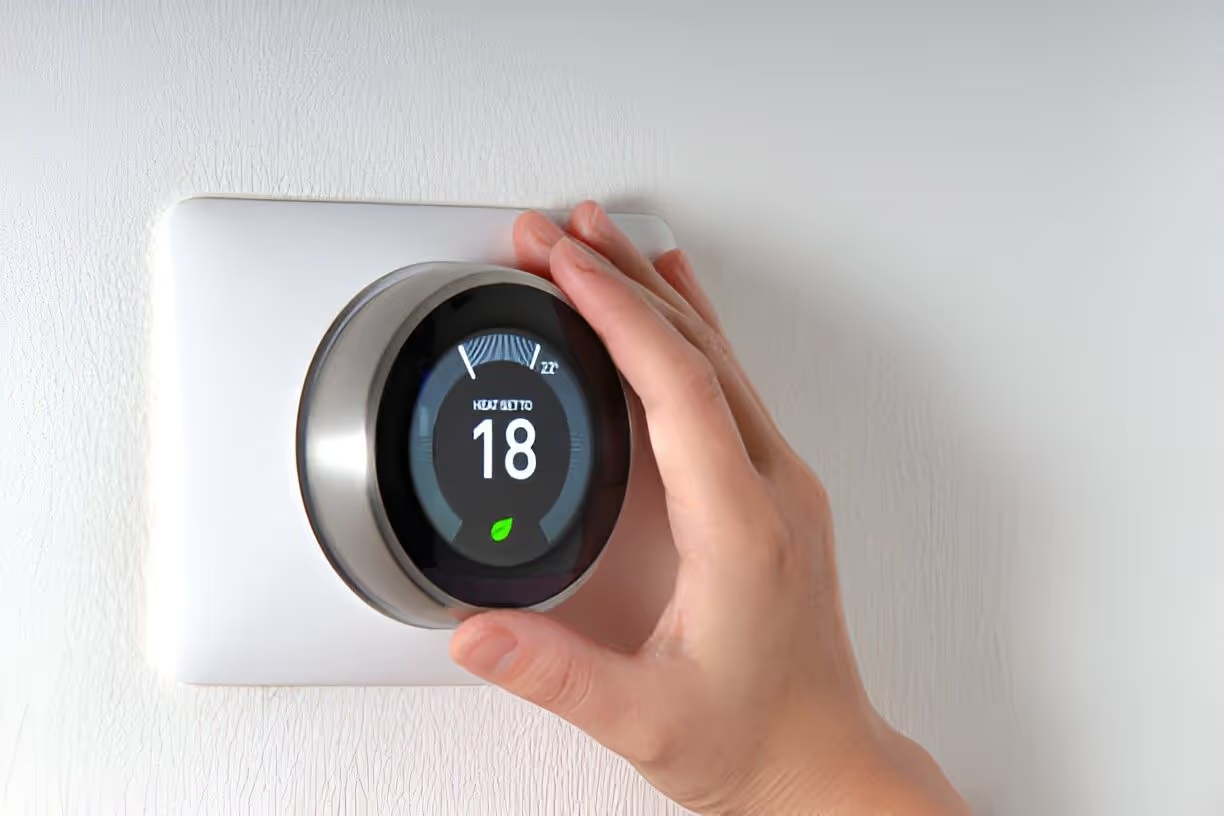Smart Thermostats in Spring Hill, FL


Why smart thermostats matter for Spring Hill, FL homes
Spring Hill’s warm, humid climate means air conditioning runs a large portion of the year. That leads to higher energy bills and more wear on HVAC equipment. A properly configured smart thermostat:
- Lowers runtime during unoccupied periods using schedules or geofencing.
- Manages humidity and fan cycles to reduce indoor moisture-related issues.
- Learns routine patterns to minimize unnecessary setpoint changes.
- Provides remote access to change settings, monitor usage, and receive alerts.
These features combine to improve comfort, extend equipment life, and deliver measurable energy savings when paired with routine HVAC maintenance.
Common smart thermostat issues and needs in Spring Hill
Spring Hill homeowners commonly seek smart thermostats to address:
- High summer cooling bills and inefficient runtime.
- Inconsistent temperature or humidity between rooms.
- Worry about leaving the A/C running while away or during long trips.
- Homes with solar panels wanting to coordinate HVAC use with production.
- Older thermostats that lack remote control, scheduling, or multi-stage compatibility.
Typical obstacles during installation include missing C-wire power, legacy HVAC wiring, and weak Wi-Fi signals needed for remote features.
Smart thermostat types and key features
Choosing the right unit depends on your HVAC setup and goals. Core features to look for:
- Learning schedules: Thermostats that adapt to your habits and optimize setpoints over time.
- Remote control & scheduling: Full app control for instant changes, vacation modes, and timed schedules.
- Humidity control: Built-in sensors or integrations that help manage indoor humidity in Florida’s climate.
- Multi-stage and heat pump compatibility: Support for complex systems common in modern HVAC equipment.
- Remote sensors: Wireless sensors to address hot/cold spots and balance comfort across rooms.
- Integration with home automation: Works with Alexa, Google Home, Apple HomeKit, or popular smart home hubs for routines and voice control.
- Energy reports and alerts: Regular usage summaries, maintenance reminders, and filter change alerts.
- Zoning and smart vents: Compatibility with zone controllers or damper systems for per-zone temperature control.
Compatibility checklist and pre-install diagnostics
Before installing, evaluate your system to avoid surprises:
- Identify HVAC type: single-stage/ multi-stage compressor, heat pump, or conventional furnace/AC.
- Check for a C-wire (common) to power the thermostat. If absent, options include adding a common wire, using a power extender, or selecting a battery-backed compatible model.
- Confirm compatibility with two-stage compressors, emergency heat on heat pumps, and multi-zone dampers.
- Test home Wi-Fi strength at the thermostat location; plan for extenders if connectivity is weak.
- Note any existing zoning components or smart home platforms you want to keep integrated.
Installation and setup process (what to expect)
A typical professional installation and setup include:
- Pre-install inspection of wiring, HVAC components, and location suitability.
- Power-off and removal of the old thermostat while documenting terminal labels and wiring.
- Install or adapt the C-wire if required, mount the new thermostat, and connect wiring to appropriate terminals.
- Power-up and basic system check to confirm heating/cooling stages are communicating correctly.
- Connect thermostat to home Wi-Fi and pair with the app or cloud account.
- Configure schedules, geofencing, home/away modes, and any energy-saving baselines.
- Integrate remote sensors, zone controllers, or home automation platforms if applicable.
- Final system test and runtime verification across seasons or simulated loads.
Installation addresses wiring quirks, calibrates sensors, and verifies the thermostat triggers stages correctly to avoid short cycles and ensure efficient operation.
Integration with home automation, zoning, and solar
Smart thermostats can be the central energy manager in a smart home:
- Coordinate with smart speakers, security systems, and lighting for unified routines (for example, "away" routines that set conservative temperatures and lower fan usage).
- Work with zoning systems and motorized dampers to direct conditioned air only where needed, improving comfort and cutting energy waste.
- Sync with solar production or battery storage systems to maximize on-site energy use: delaying heavy cooling until peak solar output helps reduce grid draw when applicable.
- Use remote sensors to manage room-level comfort and occupancy-based scheduling to prevent conditioning unused spaces.
User training and ongoing support
After setup, expect straightforward user training that covers:
- How to manually override schedules and set temporary hold periods.
- Using the mobile app for remote control, energy reports, and alerts.
- Interpreting energy-saving recommendations and taking simple actions to improve performance.
- Firmware updates, troubleshooting common connectivity issues, and resetting schedules if needed.
Periodic firmware and app updates improve features and security, while occasional HVAC tune-ups keep sensor data aligned with system performance.
Energy savings estimates and rebates
Smart thermostats commonly produce meaningful savings when used alongside good HVAC practices. Industry estimates often suggest:
- Up to 10-15% savings on cooling costs for conditioned-space optimization and scheduled setbacks.
- Additional savings from reduced compressor cycling, optimized fan use, and humidity management.
Spring Hill homeowners may qualify for local utility rebates, manufacturer incentive programs, or state energy-efficiency offerings that offset equipment costs or installation. Availability and amounts vary over time, so checking current program details is recommended when planning an upgrade.
Maintenance tips to maximize performance
- Replace or clean HVAC air filters on a regular schedule to reduce runtime and maintain airflow.
- Keep the thermostat away from direct sunlight, heat-producing appliances, and drafty doors to ensure accurate temperature sensing.
- Use remote sensors in bedrooms or living spaces with different exposure to sun to prevent overcooling.
- Schedule annual HVAC maintenance so the system responds efficiently to the thermostat’s commands.
- Monitor energy reports and adjust comfort setpoints slightly higher during summer months to increase savings without noticeable comfort loss.
Smart thermostats in Spring Hill, FL, deliver a combination of comfort control, humidity management, and energy optimization that suits the region’s climate. With proper compatibility checks, professional installation, and routine maintenance, a smart thermostat becomes a reliable tool to make your home more comfortable and efficient year-round.
Service Areas


